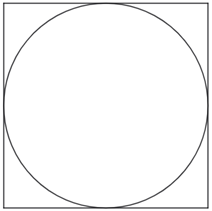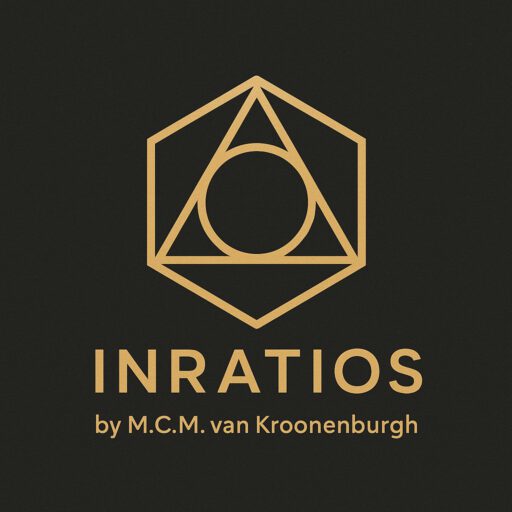The Circle Inside the Square
How geometry becomes visible when proportions reflect each other
We’ve all seen the image:
a circle, perfectly enclosed by a square.

It’s so familiar we barely notice it.
But what if this quiet shape—this balance between curve and line—holds more than symmetry?
What if it reveals something deeper about how forms relate?
Not through complexity, but through mutual definition.
The square and the circle: more than containment
We often think of a square as something that holds a circle.
A frame. A container.
But if you look closer, the relationship isn’t one-way.
The radius of the circle determines the size of the square.
And the square, in turn, gives context to the radius.
Each defines the other.
A mutual boundary. A structural handshake.
In that simple drawing—a circle touching all four sides of a square—
a fixed proportion appears.
And once it appears, it doesn’t move.
From estimation to proportion
When we use pi, we calculate.
We round.
We approximate.
But when a circle is placed inside a square, and it touches every side—
something happens.
We don’t need to estimate anymore.
A relationship appears.
Not between decimals, but between shapes.
In the Geometric Ratio Model (GRM), this relationship is key.
We don’t define the circle by pi.
We define it by its place within the square.
By what it touches.
By what contains and reflects it.
The result?
A constant ratio between the perimeters:
the circle’s perimeter is exactly 0.7854 of the square’s perimeter.
And not just that—
the radius of the circle is always exactly 0.125 of the total perimeter.
Just like the square defines the circle,
the radius defines the square—
one-eighth of its outer boundary.
Not rounded. Not approximated.
Fixed. Repeatable. Digital.
And that proportion doesn’t just work in centimeters or pixels.
It holds in every scale, every system, every dimension.
Whether you’re working on paper, in code, or in a quantum simulation—
the ratio stays the same.
Where GRM begins
This is where GRM begins.
Not with a formula, but with a shape.
Not with abstraction, but with proportion made visible.
A new way of seeing form—
grounded, reciprocal, and ready to be measured.
Up next:
What happens when we stop calculating and start comparing?
In the next blog, we explore how fixed proportions don’t just describe shapes—they simplify how we measure them.
Blog 4: Measuring Without the Mess – coming tomorrow.

